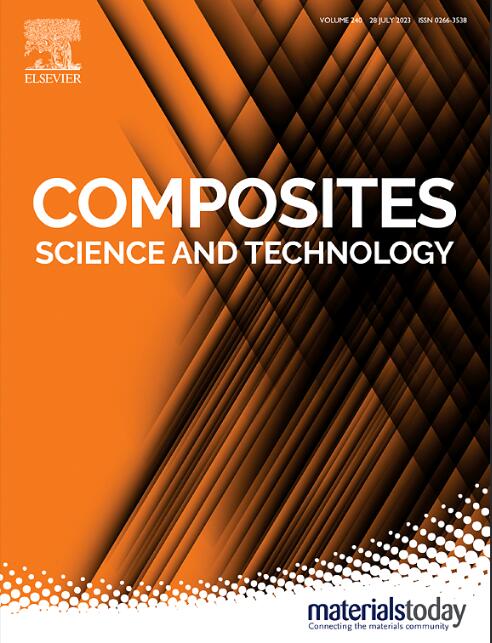Reduction of electromagnetic signature by the epoxy-based nanocomposite with ferrite@ferrite nanostructure
IF 8.3
1区 材料科学
Q1 MATERIALS SCIENCE, COMPOSITES
引用次数: 0
Abstract
The highly efficient electromagnetic interference (EMI) shielding materials that can be applied for signature reduction are the subject of numerous studies due to their applicability potential in the military and aerospace fields. A novel approach to characterize epoxy-based nanocomposites with complex ferrite nanostructures was used and applied in order to determine the possibility of using an epoxy-based nanocomposite with ferrite@ferrite nanostructure as a signature reduction material. Two nanostructures, i.e. Fe3O4@CoFe2O4 and Fe3O4@NiZnFe2O4, were developed, and their magnetic and dielectric properties were compared with the pure core – Fe3O4. Analysis of magnetodielectric properties allowed us to choose the bi-magnetic Fe3O4@CoFe2O4 nanostructure as the most adequate one for preparing the nanocomposite with high EMI shielding performance. An epoxy-based nanocomposite with these nanoparticles and an organic filler (amorphous yellow dextrin and rice starch mixture) was prepared. The shielding efficiency analysis in the transmission and reflection modes confirmed that the composite with 50 wt% of Fe3O4@CoFe2O4 can enhance the absorption of electromagnetic radiation. A reduction of the reflectivity from 0.97 to 0.45 and the increase in absorptivity from 0.03 to 0.55 at 8 GHz compared to pure polymer matrix backed by a metallic plate, was observed. Also, shielding efficiency related to the reflection of the electromagnetic wave decreased from 14.74 dB to 2.61 dB, confirming a change of the EMI shielding mechanism from reflection (for metallic components) to absorption (for metallic surface covered by a nanocomposite).

ferrite@ferrite纳米结构环氧基纳米复合材料的电磁特征还原
高效电磁干扰(EMI)屏蔽材料由于其在军事和航空航天领域的应用潜力而成为众多研究的课题。为了确定具有ferrite@ferrite纳米结构的环氧基纳米复合材料作为特征还原材料的可能性,采用了一种新的方法来表征具有复杂铁氧体纳米结构的环氧基纳米复合材料。制备了两种纳米结构Fe3O4@CoFe2O4和Fe3O4@NiZnFe2O4,并将其磁性和介电性能与纯芯Fe3O4进行了比较。通过对磁介电性能的分析,我们选择双磁性Fe3O4@CoFe2O4纳米结构作为制备具有高电磁干扰屏蔽性能的纳米复合材料的最合适的纳米结构。将这些纳米颗粒与有机填料(无定形黄糊精和大米淀粉混合物)混合制成环氧基纳米复合材料。通过透射和反射模式下的屏蔽效率分析,证实了Fe3O4@CoFe2O4质量分数为50%的复合材料可以增强对电磁辐射的吸收。观察到,与金属板背衬的纯聚合物基体相比,在8 GHz时,反射率从0.97降低到0.45,吸收率从0.03增加到0.55。此外,与电磁波反射相关的屏蔽效率从14.74 dB下降到2.61 dB,证实了电磁干扰屏蔽机制从反射(对于金属组件)到吸收(对于纳米复合材料覆盖的金属表面)的变化。
本文章由计算机程序翻译,如有差异,请以英文原文为准。
求助全文
约1分钟内获得全文
求助全文
来源期刊

Composites Science and Technology
工程技术-材料科学:复合
CiteScore
16.20
自引率
9.90%
发文量
611
审稿时长
33 days
期刊介绍:
Composites Science and Technology publishes refereed original articles on the fundamental and applied science of engineering composites. The focus of this journal is on polymeric matrix composites with reinforcements/fillers ranging from nano- to macro-scale. CSTE encourages manuscripts reporting unique, innovative contributions to the physics, chemistry, materials science and applied mechanics aspects of advanced composites.
Besides traditional fiber reinforced composites, novel composites with significant potential for engineering applications are encouraged.
 求助内容:
求助内容: 应助结果提醒方式:
应助结果提醒方式:


